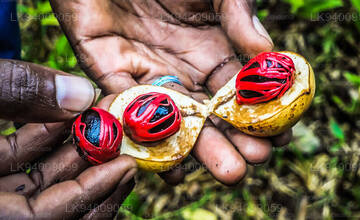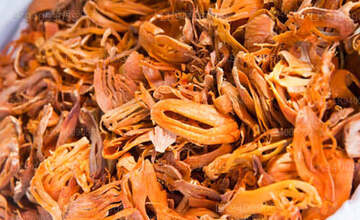Mace



The majority of recipes call for ground mace. No preparation is needed and it can be used right out of the jar. Add it to a dry spice mix, incorporate it into a recipe, or sprinkle it on top of sweets, porridge, or beverages in a similar manner to ground nutmeg.
Mace blades are easy to grind, either with a spice grinder or a mortar and pestle. Gently roasting the blades and let them cool off prior to grinding wakes up the essential oils for a more fragrant spice and helps prevent the oils from clogging a spice grinder. Mace blades should be toasted in a dry pan, just until crispy and fragrant; it's common to toast other whole spices like cardamom and cloves at the same time.
Mace is a yellowish-brown spice that is derived from the dried lacy coating of the nutmeg seed. Available in ground form and as dried "blades," it is often paired with other aromatic spices. Mace figures prominently in Asian, Caribbean, Indian, and Moroccan cuisines, and is also used in British, Dutch, and French cooking. It is commonly found in spice blends and baked goods, as well as savory dishes like soups, sauces, and poultry and fish recipes. The "mace" that is used as a defensive pepper spray has no relationship to the spice.
The nutmeg tree (Myristica fragrans) is a tropical evergreen that produces both nutmeg and mace. Mace is the red lacy coating (called the aril) that encases the nutmeg seed. When the tree's fruit reaches maturity, it splits open and reveals the aril and seed. The fruit is harvested and the aril is removed by hand, flattened, and left to dry outside for 10 to 14 days. The red aril takes on an amber-, yellow- or orange-brown color as it dries and, when left whole, is called a "blade" of mace. The blades are sold as is or processed into a ground spice.







